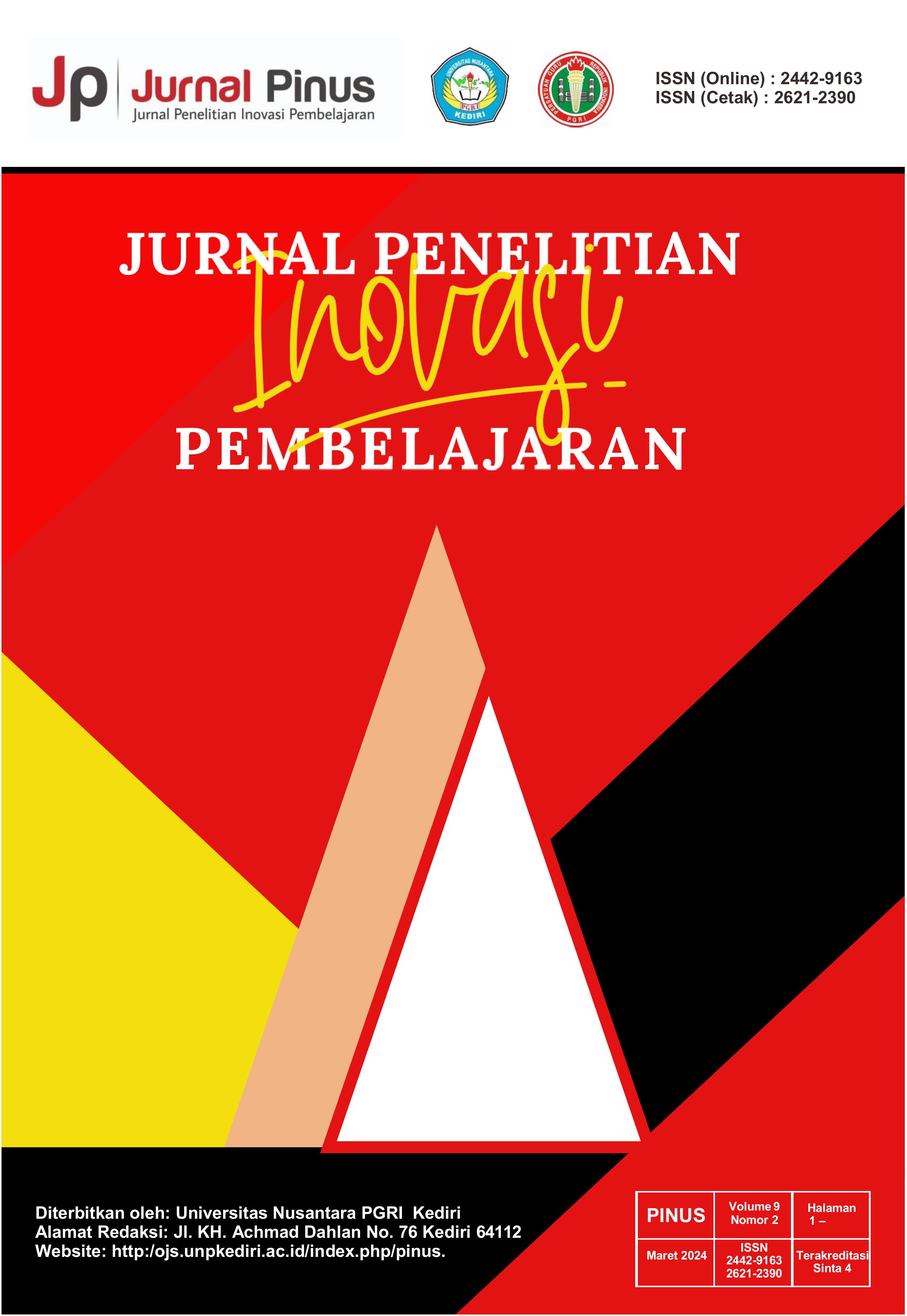Application of Basic Education Content Standards
DOI:
https://doi.org/10.29407/pn.v9i2.20210Keywords:
Educational content standards, skills, critical thinking, learningAbstract
Basic education plays a key role in developing students' critical thinking skills in preparation for tackling complex global challenges. The purpose of this study was to analyze the application of basic educational content standards in basic education learning and its impact on improving students' critical thinking skills. This study utilizes methods of data collection processes conducted through literature reviews of scientific papers, as the data generated is descriptive. Data analysis was performed using a qualitative approach. Research results show that applying basic educational content standards to basic educational learning can significantly contribute to improving students' critical thinking skills. Primary school teachers who apply content standards extensively and consistently in primary education create learning environments in which students develop critical thinking skills through comprehension of content, analysis of information, evaluation of arguments, and rational decision-making. can be produced.
Downloads
References
Parnawi, A. (2020). Penelitian tindakan kelas (classroom action research). Deepublish.
Prastowo, A. (2017). Menyusun Rencana Pelaksanaan Pembelajaran (RPP) Tematik Terpadu: Implementasi Kurikulum 2018 Untuk SD/MI. Kencana.
Susanto, A. (2014). Pengembangan pembelajaran Pendidikan Dasar di SD. Kencana.
Uno, H. B., & Mohamad, N. (2022). Belajar dengan pendekatan PAILKEM: pembelajaran aktif, inovatif, lingkungan, kreatif, efektif, menarik. Bumi Aksara.
Agnafia, D., N. (2019). Analisis Kemampuan Berpikir Kritis Siswa dalam Pembelajaran Biologi. 6(1), 45–53.
Apriliana, L. (2020). Meta-Analisis Pembelajaran Kooperatif Tipe Numbered Heads Together (THT) terhadap Keterampilan Berpikir Kritis dan Hasil Belajar.
Asfiyah, S. (2021). Implementasi Penilaian Berbasis High Order Thinking Skills pada Mapel PAI dalam Meningkatkan Berpikir Kritis dan Kreatif Siswa di Tingkat SMP. Quality: Journal of Empirical Research in Islamic Education, 9(1), 103–120.
Hasyda, S., & Djenawa, A. (2020). Penerapan Pembelajaran Kooperatif Picture and Picture Bermedia Mind Map untuk Meningkatkan Kemampuan Literasi Sosial pada Peserta Didik Sekolah Dasar. Jurnal Basicedu, 4(3), 696–706. https://doi.org/10.31004/basicedu.v4i3.414
Jufri, A., W. (2016). Belajar dan Pembelajaran Sains. Penerbit Pustaka Reka Cipta.
Malawi, I., & Tristiar, A. (2016). Pengaruh Konsentrasi dan Kemampuan Berpikir Kritis terhadap Prestasi Belajar IPS Siswa Kelas V SDN Manisrejo I Kabupaten Magetan. Jurnal Pendidikan Dasar Dan Pembelajaran, 118–131.
Musfiqon, M., & Nurdyansyah. (2015). Pendekatan Pembelajaran Saintifik. Nizamia Learning Center Sidoarjo.
Resti, S., N., E. (2014). Hubungan Motivasi Berprestasi Siswa dan Kemampuan Berpikir Kritis Siswa dengan Hasil Belajar Ilmu Pengetahuan Sosial (IPS) Siswa.
Romadhon, D., N., A. (2019). Implementasi Keterampilan Berpikir Kritis pada Pembelajaran IPS. Jurnal Istoria Prodi Pendidikan Sejarah FKIP Universitas Batanghari Jambi, 3(2), 94–99.
Sari, N., P., Budijanto, & Amaruddin, A. (2017). Pengaruh Penerapan Model Pembelajaran Problem Based Learning dipadu Numbered Heads Together terhadap Keterampilan Metakognitif dan Kemampuan Berpikir Kritis Geografi Siswa SMA. Jurnal Pendidikan: Teori, Penelitian, Dan Pengembangan, 2(3), 440–447.
Syaharuddin, & Mutiani. (2020). Strategi Pembelajaran IPS: Konsep dan Aplikasi (B. Subiyakto & W. Abbas, E. (eds.)). Program Studi Pendidikan IPS Fakultas Keguruan dan Ilmu Pendidikan Universitas Lambung Mangkurat.
Downloads
Published
Issue
Section
License
Authors who publish with this journal agree to the following terms:
- Copyright on any article is retained by the author(s).
- The author grants the journal, right of first publication with the work simultaneously licensed under a Creative Commons Attribution License that allows others to share the work with an acknowledgment of the work’s authorship and initial publication in this journal.
- Authors are able to enter into separate, additional contractual arrangements for the non-exclusive distribution of the journal’s published version of the work (e.g., post it to an institutional repository or publish it in a book), with an acknowledgment of its initial publication in this journal.
- Authors are permitted and encouraged to post their work online (e.g., in institutional repositories or on their website) prior to and during the submission process, as it can lead to productive exchanges, as well as earlier and greater citation of published work.
- The article and any associated published material is distributed under the Creative Commons Attribution-ShareAlike 4.0 International License









